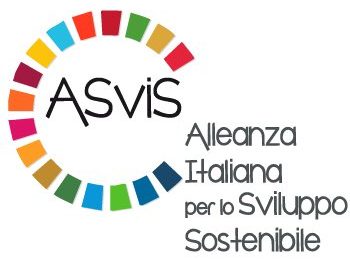
Mambomba, a Tanzanian farmer, works in his rice field in the Ndanda region.
Why might small farmers have greater difficulty coping with income fluctuations than large farmers? How might this become a poverty trap, and how might this vicious circle be broken?
Farming and risk: an overview
Risk, interpreted as a spectrum of the potential states of the world exogenous to the individuals, is a core part in the life of people living in developing countries (Dercon, 2005). This is especially true for the agricultural sector: the volatility of weather conditions, the differences in the knowledge of inputs and outputs prices characterise farming as an activity marked by a high level of uncertainty, with consequences on the welfare of the households operating in this field. For instance, in research carried out between 1999 and 2004 by Dercon, Hoddinott and Woldehanna (2005) in rural Ethiopia, 46.8% of the respondents mentioned drought as a major shock, which had caused serious loss of assets or important fluctuations in the levels of income and consumption. Nevertheless, agriculture still represents an important share in the majority of developing economies: for 57.3% of Sub-Saharan people, this sector represents the main source of livelihood (Dercon and Gollin, 2014).
Different actors, different constraints
However, as an exogenous factor, risk does not affect each individual in the same way and income fluctuations differ according to the agent considered and its ability to cope with these shocks. Therefore, we have to outline a main distinction for the economic actors involved in the agricultural activity and this differentiation in mainly based on the farm size. In many areas of the developing world small plots appear to be dominant: farms of less than 2 hectares are 78% in South Asia and 69% in Sub-Saharan Africa (Deininger and Byerlee, 2012). Consequently, it arouses interest to investigate if the hardships faced − and the risk-coping strategies worked out by these actors − are the same of those characterising larger farms or, on the contrary, if they are likely to be more exposed to income shocks and to fall into poverty.
Income fluctuations and risk-coping strategies
Developing countries are typically distinguished by the absence of complete credit markets. This fact implies that consumption and production decisions cannot be separable and thus the structural risk, which typifies the agricultural sector, impacts the income-generating pattern (Morduch, 1995). So the ability of smoothing income towards shocks has a direct effect on the level of consumption and subsequently, on the household livelihood.
We can distinguish between two different levels in which economic agents may act to cope with these fluctuations: ex-ante and ex-post the shock.
Ex-ante strategies
To cope with those market failures, farmers try to smooth their income and reduce volatility through ex-ante actions. These strategies involve adjustment to inputs choices and to production patterns, such as resorting to less risky crops which can insure against price fluctuations or adverse weather conditions. For instance, in South India, households whose consumption is more affected by income fluctuations tend to assign a greater share of their land to safer varieties of rice and castor (Morduch, 1990).
However, large farming companies seem to be less concerned by these strategies. In fact, these economic agents do not have the same consumption constraints and they can afford to take risk more easily. Additionally, they are able to improve coordination with intermediate channels, and thanks to this vertical integration they succeed in reducing transaction and inputs costs, consolidating their position in the market and moderating the effects of prices’ uncertainty. We can observe evidence of this in Argentina, where the remarkable bargaining power of the large vertically integrated companies reduce input prices and increase output prices by 10% and 20% respectively (Manciana et al., 2009).
Moreover, large farms appear to have comparative advantages with one of the main sources of risk reduction: diversification. Diversification acts at two different levels: differentiating the production helps to mitigate market fluctuations, diversifying operations across several areas provides an additional way to self-insure against weather risks (Deininger and Byerlee, 2012). Due to their limited extension, smallholders may still diversify, but this limits any potential economy of scale, resulting in a trade-off between their available risk- coping strategies and the expected returns.
Ex post strategies
Ex-post strategies are mostly related with credit and insurance markets, but the access to these markets appears to be different according to the actor concerned. The high transactions costs characterising the formal credit in rural areas imply that the unit cost of borrowing decreases with the loan size, reducing small farmers’ ability to rely on these channels. On the other hand, large farming companies may have preferential access to credit, as showed by the Brazilian Cerrado’s case, or easier access to foreign financial markets, which are a feasible alternative against the inefficiency of the domestic ones (Deininger and Byerlee, 2012).
Stay healty: a higher constraint
Finally, the production of households operating on small plots, where ownership coincides with management, is also more exposed to health shocks. The body is the main asset of these economic agents, and rural activities are likely to bring on disabling accidents which affect physical conditions. Thus, a working adult, in the absence of an affordable and effective medical system, from a main resource of livelihood may become a burden over the entire household (Chambers, 2006). Furthermore, evidence from Kenya shows that the death of a prime adult has important (and negative) consequences over the production patterns, in terms of type of crops cultivated and productivity of the land (Yamano and Jayne, 2004).
Risk-coping strategies and poverty traps
Therefore, we observe a greater risk exposure for smallholders, mainly due to a limited access to credit, insurance and to constraints on their coping strategies. This greater exposure can have major consequences on their long-term welfare. Indeed, it might lead to a poverty trap.
We can define a poverty trap as a poverty equilibrium where there is no possible way out without an external intervention (Dercon, 2005). There are at least two ways in which smallholders may be led to this adverse equilibrium: the first one is related with the level of assets owned by the individuals, the second one results from the risk-coping strategies themselves.
Shocks have various nature (droughts, political unrest, slump in prices, illness…), but in all their forms they can have consequences on the household’s assets. Lack of formal insurance cover against these shocks might imply the permanent loss of productive assets. People may also sell them off as a reaction to economic downturns, however this strategy might have negative and unexpected results, as the oversupply of the asset concerned may lead to a subsequent collapse of its price (Dercon, 2005). In both cases, if the asset level is pushed under a certain threshold, the household falls in a “assets poverty trap” which prevents profitable activities with increasing returns, leaving the household in a constraining “income stagnation” (Carter and Barrett, 2006 ).
Actually, the very ex-ante risk-adverse behaviour of small farmers can lead to an identical destitution regime. As we have seen previously, smallholders shape their production pattern in order to reduce the impacts of adverse flows. This means not just an underuse of inputs (like fertilizer) as a way of decreasing the risk associated with the investment in them, but also a production oriented to crops which are less risky, but, at the same time, less profitable (Morduch, 1995). In particular, this attitude applies in cases of absence of alternative risk-covering assets, like in Tanzania, where farmers lacking in livestock (used as a buffer stock) grow proportionately more sweet potatoes (a low-risk, low-return crop) on their fields (Dercon, 1996).
External measures
So far we have focused on the constraints and different level of uncertainty faced by smallholders compared to larger companies and how these differences may have implications on the threat of chronic destitution. However, the same definition of poverty trap involves an analysis of the possible external measures which can be implemented to avoid this severe outcome.
Income smoothing is more likely to occur when households foresee being unable to borrow or insure themselves (Morduch, 1995). Thus, since the adverse risk-coping behaviour is determined by the inability of accessing these markets, the insurance and the credit levels remain two of the most important, and challenging, fields of intervention.
Informal channels and opportunities
In many developing countries a universal social insurance system still appears to be an unfeasible scenario. This is due not just to the traditional incentives problem, where an agent “fully-covered” against risk will lack in drive to enhance her/his productivity and will lean to more hazardous behaviours, but also to the evident budget constraints and limited administrative capacity which characterise these states (Dercon, 2005). If formal channels prove to be ineffective, informality may be a solution. From a study conducted by Park (2006) in rural Bangladesh, households living in the same “baris” − a social unit smaller than the village itself − achieve a remarkable ability to cope with income fluctuations thanks to informal insurance networks between neighbours. These small communities, relying on the existent relationships of mutual trust, are able to overcome the conventional information bias of moral hazard, providing an alternative safety net against idiosyncratic consumption shocks. As a consequence, member households are less likely to undertake other risk-coping measures, preserving a profitable level of assets. However these informal systems cannot be an ultimate response, as they are characterised by several imperfections. Firstly, they are limited on the extent of the coverage provided to their members and this is a natural consequence of their informal and restricted nature. Secondly, as they arise from neighbours living in the same area, these networks fail to protect against covariate risks (Dercon, 2005).
Which role for international organizations and national institutions?
Thus, there is still room for a state intervention. Supporting local risk-sharing is certainly a starting point: central governments should provide that “upper-level” coordination between insurance networks which might enhance their resilience against high-magnitude shocks covering large areas. Governments should work as well on the access to formal insurance at rural level, cooperating with financial institutions in order to provide micro-insurance and alternative products tailored to low-income smallholders, covering the major risks they are exposed to (market outputs fluctuations, weather shocks) (Dercon, 2005).
Securing prices and marketing for small farmers might also be a solution to the inherent uncertainty of farming activity (Chambers, 2006), but it could cause adverse incentives on their own productivity. At the same time, actions enhancing access to formal credit are likely to provide positive outcomes: thanks to borrowing, people might invest, increasing their assets level and subsequently their income and their savings, which is an effective way to support their self-insurance strategy based on the disposal of the assets owned (Dercon, 2005). Furthermore, every action taken by the government to increase the diversification of income and assets sources, which characterises the risk-coping strategies portfolio of low-income households (Chambers, 2006), are likely to improve individuals’ welfare, supporting their ability to deal with shocks.
In parallel with these interventions, providing effective and free medical assistance might prevent the negative effects of health diseases on the livelihood of smallholders − assets sale, constraints on productivity patterns, loss of knowledge − preserving their main and most importance asset: the body (Chambers, 2006).
Unfortunately, all these instruments require political capacity and economic resources that are often missed in the central governments of several developing countries. Thus external assistance, through NGOs, international organizations and local social institutions, might help to work on these channels.
In conclusion, informal insurance networks in limited social units appear to be a feasible solution to mitigate consumption fluctuations in rural areas, but the restrained extent of the protection provided and the inability of facing covariate risk call for external interventions consolidating those networks across larger areas. In parallel with this, Governments should work on the formal credit and financial markets in order to limit adverse risk-coping behaviour of smallholders, recognizing the specific constraints and the higher uncertainty that these economic actors face.
Bibliographical references
- Carter, M.R. and C.B. Barrett (2006), “The Economics of Poverty Traps and Persistent Poverty: An Asset-Based Approach”, Journal of Development Studies, 42(2), 178-199;
- Chambers, R. (2006), “Vulnerability, Coping and Policy”, IDS Bulletin, 37(4), 33-40, September;
- Deininger, K. and D. Byerlee (2012), “The Rise of Large Farms in Land Abundant Countries: Do They Have a Future?”, World Development, 40(4), 701-714;
- Dercon, S. (1996), “Risk, Crop Choice and Savings: Evidence from Tanzania”, Economic Development and Cultural Change, 44(3), 385–514;
- Dercon, S. (2005), “Vulnerability: a micro perspective”, Queen Elizabeth House Working Paper Series, 149;
- Dercon, S., J. Hoddinott and T. Woldehanna (2005), “Vulnerability and shocks in 15 Ethiopian Villages, 1999-2004“, University of Oxford, mimeo;
- Dercon, S. and D. Gollin (2014), “Agriculture in African Development: A Review of Theories and Strategies”, Centre for the Study of African Economies, University of Oxford, CSAE Working Paper WPS/2014-22;
- Manciana, E., Trucco, M., & Piñeiro, M. (2009), “Large scale acquisition of land rights for agricultural or natural resource-based use: Argentina”, Buenos Aires, Draft Paper Prepared for the World Bank;
- Morduch, J. (1990), “Risk, Production and Saving: Theory and Evidence from Indian Households”, Harvard University, Manuscript;
- Morduch, J. (1995), “Income Smoothing and Consumption Smoothing”, Journal of Economic Perspectives, 9(3), 103-14;
- Park, C. (2006) “Risk-Pooling between Households and Risk-Coping Measures in Developing Countries: Evidence from Rural Bangladesh”, Economic Development and Cultural Change, 54(2), 423-457;
- Yamano, T. and T.S. Jayne (2004), “Measuring the Impacts of Working-Age Adult Mortality on Small-Scale Farm Households in Kenya”, World Development, 32(1), 91–119.
Foto: Mambomba, a Tanzanian farmer, works in his rice field in the Ndanda region. (CC BY-SA 4.0) by Felicity Feinman








